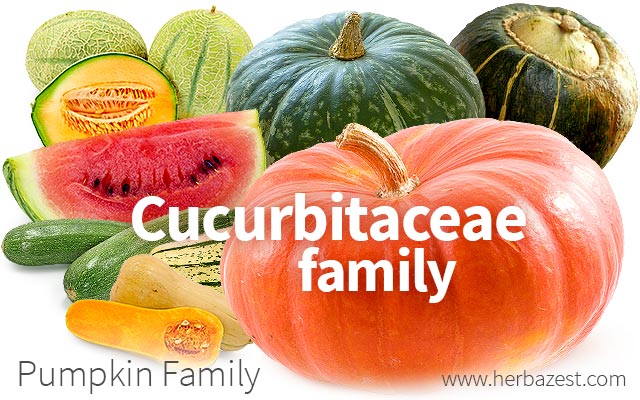The term pumpkins usually describes any round, orange squash used for pies and jack-o-lanterns. The scientific name of pumpkins is Cucurbita pepo, and they are part of the large Cucurbitaceae family. Pumpkins are used for a number of different culinary and decorative purposes, and have become a staple of the American diet. Though there is still much to be learned about the pumpkin, it is thought to have originated in the Americas before spreading to other continents during the period of European expansion.
Pumpkin Family
Plants in the Cucurbitaceae family, also called pumpkin family, are recognizable by their vines, which have round, deep-lobed and alternately arranged leaves; by their male and female flowers; and by their large, flat seeds.
Cucumbers, watermelons, and yellow squash are all members of the pumpkin family. They all produce large, fleshy fruits with internal seeds and a hard, outer covering that is sometimes referred to as a rind.
Origin of Pumpkin Family
Though commonly believed to have originated in Asia, pumpkin is now known to be native to the Americas - particularly regions of Latin America. The earliest known record of human consumption of cucurbits comes from Mexico, where remnants of seeds and squashes have been found in dwellings dating back to the year 5,000 BCE. Other archeological remains can be found in Belize, Peru, and Guatemala.
Evolution of Pumpkin
Cucurbita pepo has evolved into three main subspecies (or lineages): subsp. fraterna, subsp. pepo, and subsp. texana. Within these subspecies, there exist a myriad of different varieties and cultivars; many are manmade, while some have developed naturally in the wild. The pepo subspecies is the most commonly cultivated.
Subsp. fraterna and subsp. texana grow wild in northeastern Mexico and in the southeastern United States, respectively. No natural specimens of subsp. pepo have been identified, but it may be native to southern North America.
Additionally, early 16th century colonial expansion resulted in a wider dispersal of Cucurbita pepo in Europe and beyond; pumpkins are now cultivated wherever crops can be grown in the warm summer months.
The use of pumpkin as an important crop for human consumption dates many thousands of years back to the time of the ancient civilizations of North and South America. Pumpkins, as well as other species in the Cucurbitaceae family, have evolved in many natural and manmade ways while simultaneously spreading out from the Americas to Europe and other continents.
Sources
- Missouri Botanical Garden, Gardening Help FAQs, Horticulture questions and answers
- Purdue University, Cucurbits
- Theoretical and Applied Genetics, Genetic relationships and evolution in Cucurbita pepo (pumpkin, squash, gourd) as revealed by simple sequence repeat polymorphisms, 2012
- University of California, Cucurbitaceae – Fruits for peons, pilgrims, and pharaohs
- University of Illinois, Extension Office, Pumpkins and more
- USDA Plants Database, Cucurbita pepo L. field pumpkin
- Kew Royal Botanic Gardens, Cucurbita pepo (pumpkin)




